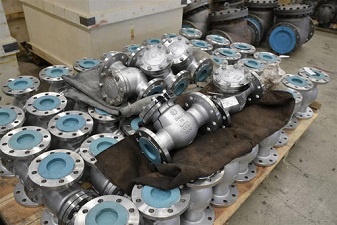What is a Balance Valve?

What is a Balance Valve?
A balance valve is a kind of valve with special functions. It has good flow characteristics, an indicator of the opening degree of sanitary valve, an opening lock device, and a small pressure measuring valve for measuring the flow. The flow value through the balance valve can be directly displayed by using special intelligent meters, entering the valve model and the value of opening, and referencing the measured pressure signal. As long as we install the balance valve with appropriate specifications at various branches and user inlets, and use dedicated intelligent meters for one-time debugging, then the amount of flow for various users can reach the set value.
What does a balancing valve do?
Balance valve plays the role of dynamic and static balance regulation under hydraulic working conditions. Static balance valve is also known as manual balance valve, digital lock balance valve, double-position regulating valve, etc. It achieves the goal of flow regulation by changing the gap between the valve core and valve seat to change the flow resistance through the valve. The object it has an effect on is the resistance of the system. It can distribute the new amount of water according to the designed proportion. All branches increase or decrease at the same time according to the proportion, and still meet the needs of part of the load, playing the role of heat balance.
What are the types of balance valves?
Dynamic balance valve can be divided into dynamic flow balance valve, self-powered pressure difference control valve, etc. Dynamic flow balance valve is also known as self-powered flow control valve, self-powered balance valve, constant flow valve, automatic balance valve, etc. A self-powered flow control valve automatically changes the resistance coefficient according to the working conditions of the system. In a certain range of pressure differences, it can effectively control the flow to be in a constant value. When the pressure difference before and after the valve increases, through the automatic closing action of the valve, the flow can remain constant. When the pressure difference decreases, the valve automatically opens, and the flow still remains constant.
What is a dynamic pressure difference balance valve?
Dynamic pressure difference balance valve is also known as self-powered pressure difference control valve, pressure difference controller, pressure-maintaining variable synchronizer, etc. It uses the pressure difference to regulate the opening of the valve. And it uses the changes in pressure drop of the valve core to make up for the changes in pipeline resistance so that the pressure difference can remain unchanged when the working conditions change.
In a certain range of flow, it can effectively keep the pressure difference of the controlled system constant. When the pressure difference of the system increases, through the automatic closing action of the valve, it can ensure that the pressure difference of the controlled system is increased. When the pressure difference of the system decreases, the valve automatically opens, and the pressure still remains unchanged. For the self-powered pressure difference control valve, in the range of control, the automatic valve plug is closed. When the pressure differences at both ends of the valve exceed the preset value, the valve plug automatically opens and automatically regulates the opening under the effect of the pressure-sensing film, keeping the pressure differences at both ends of the valve relatively constant.




